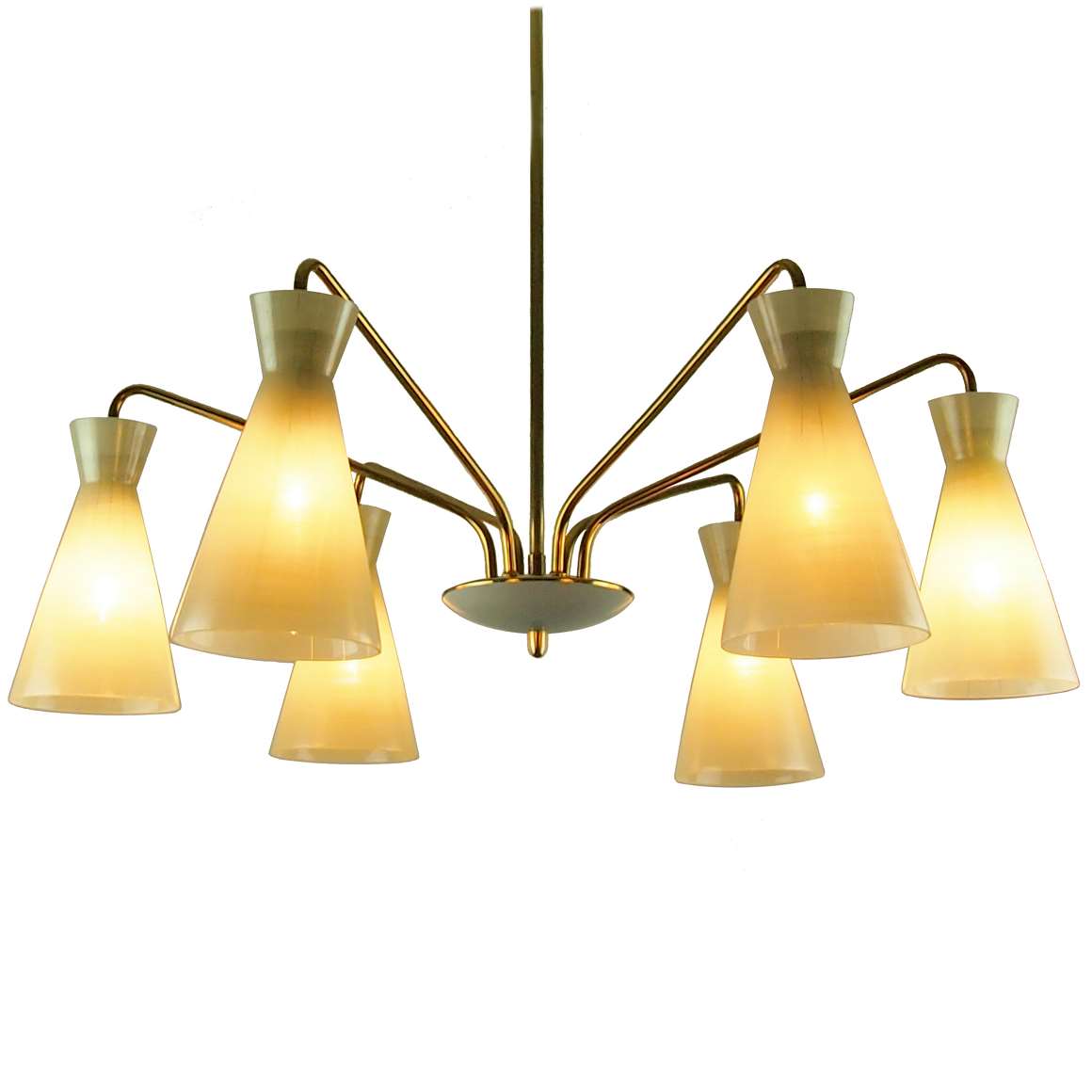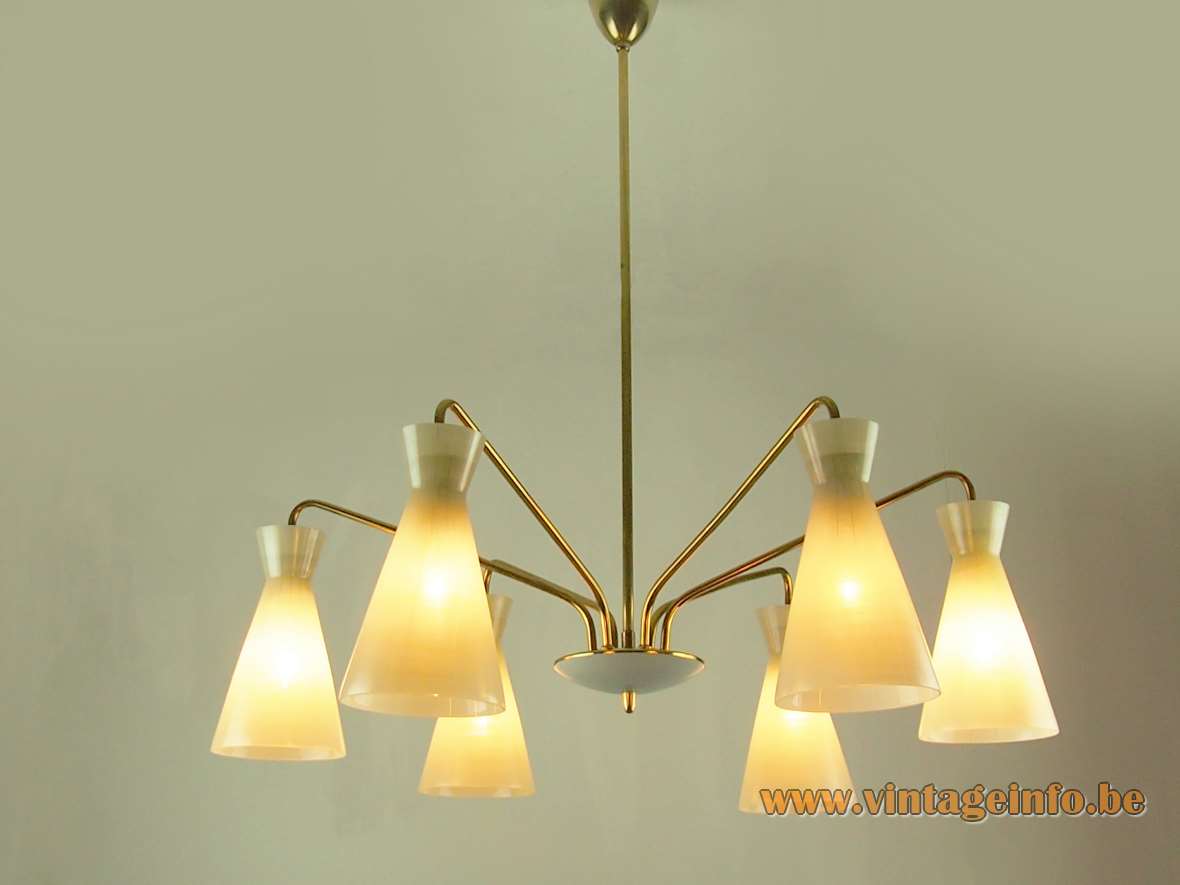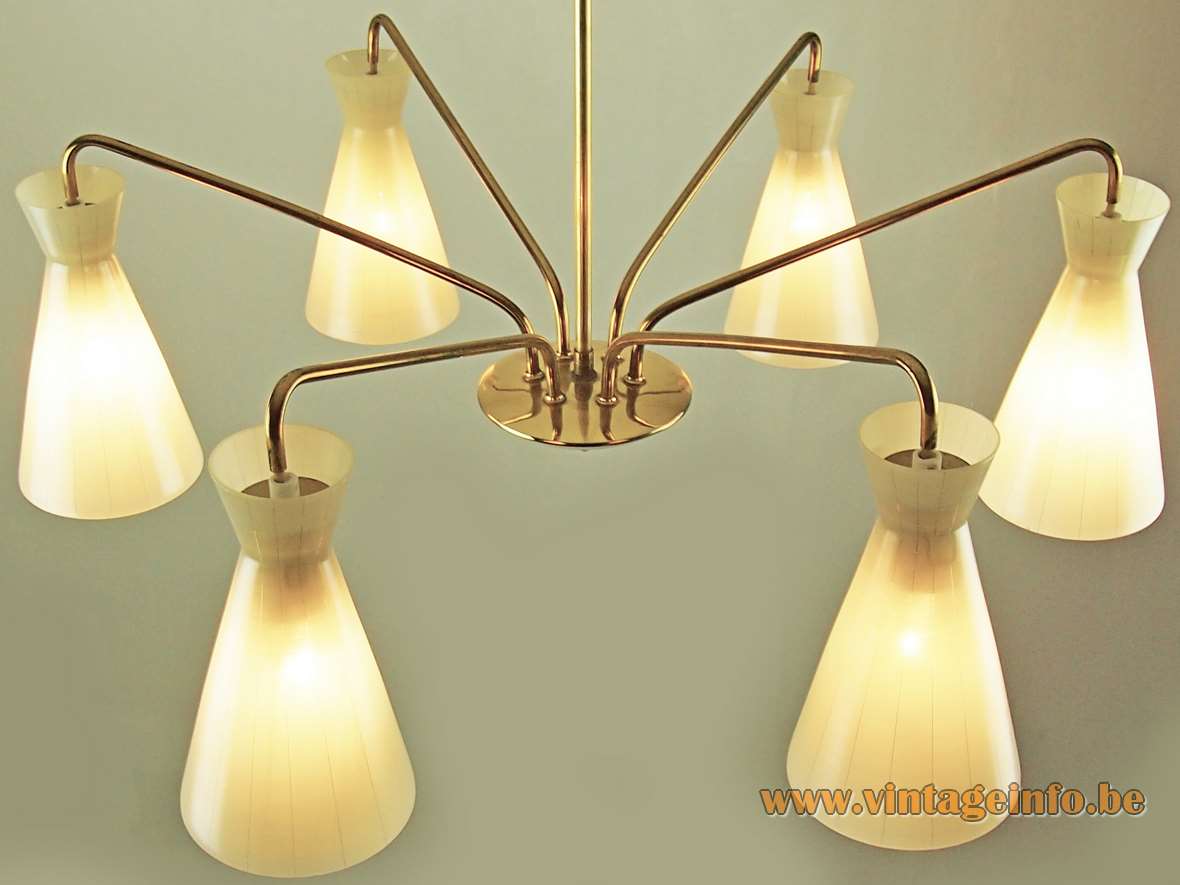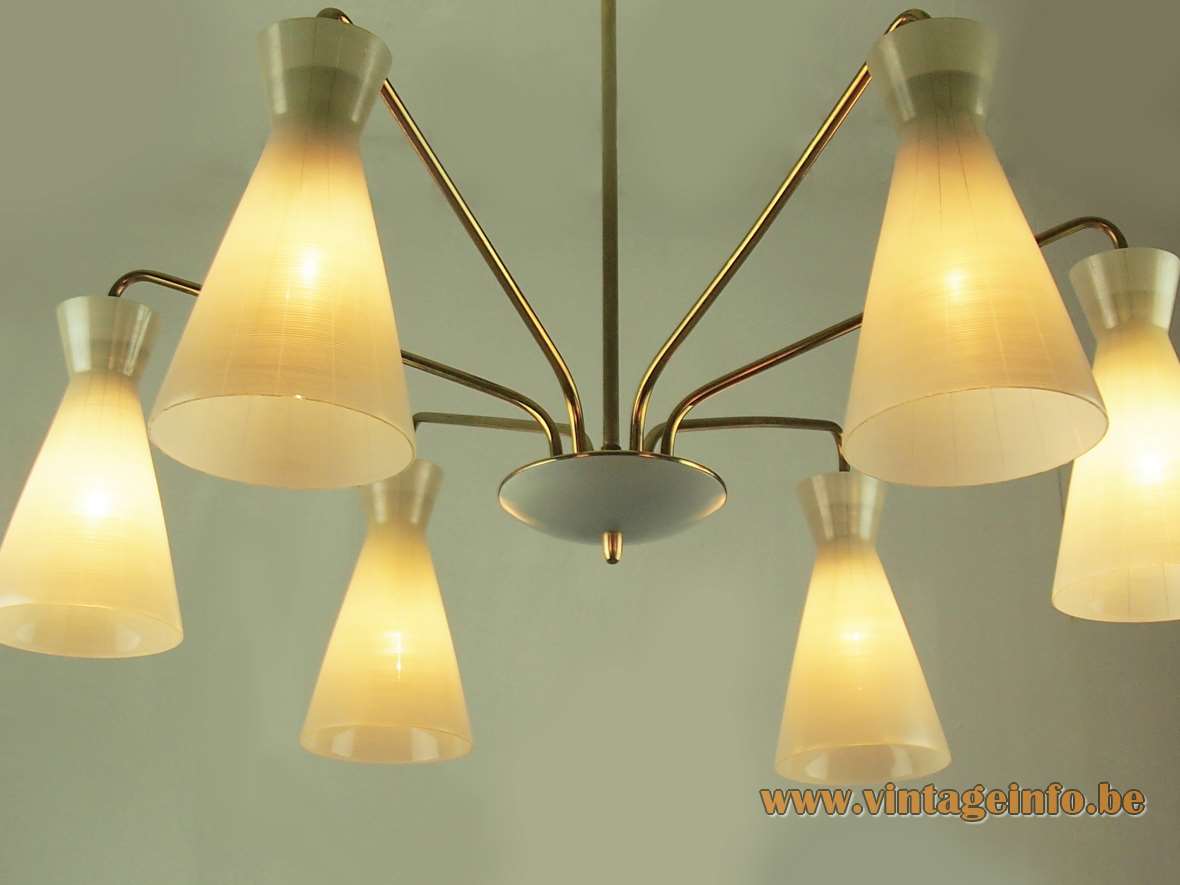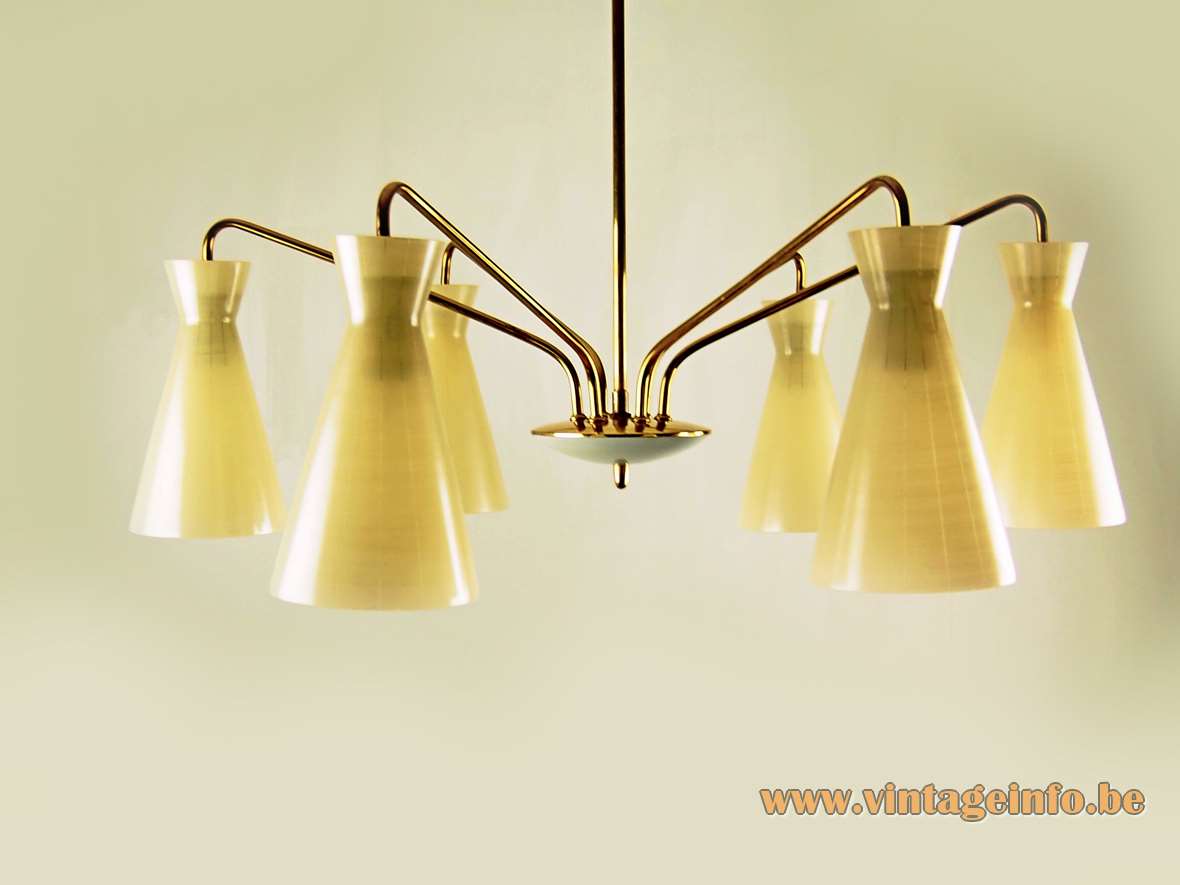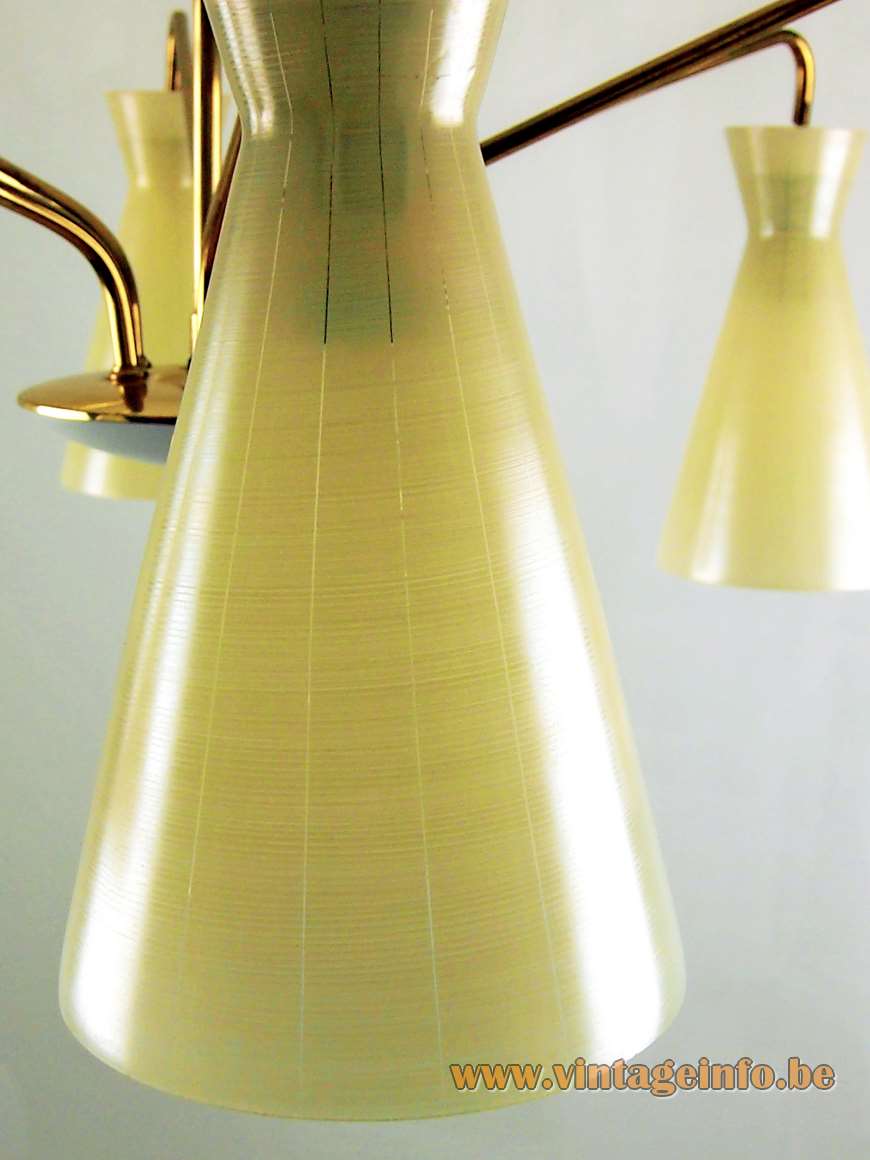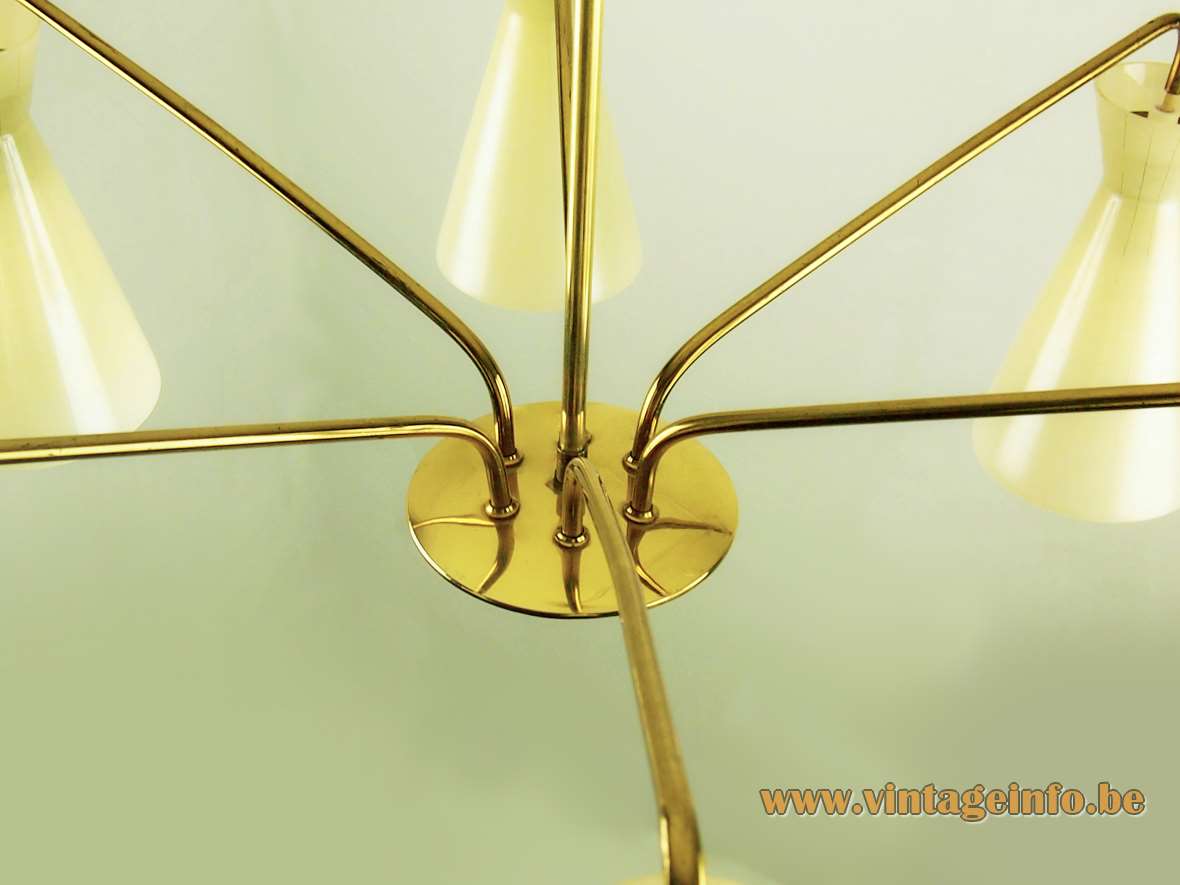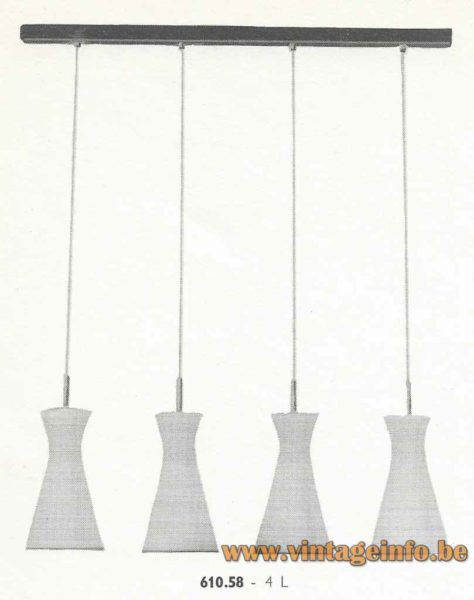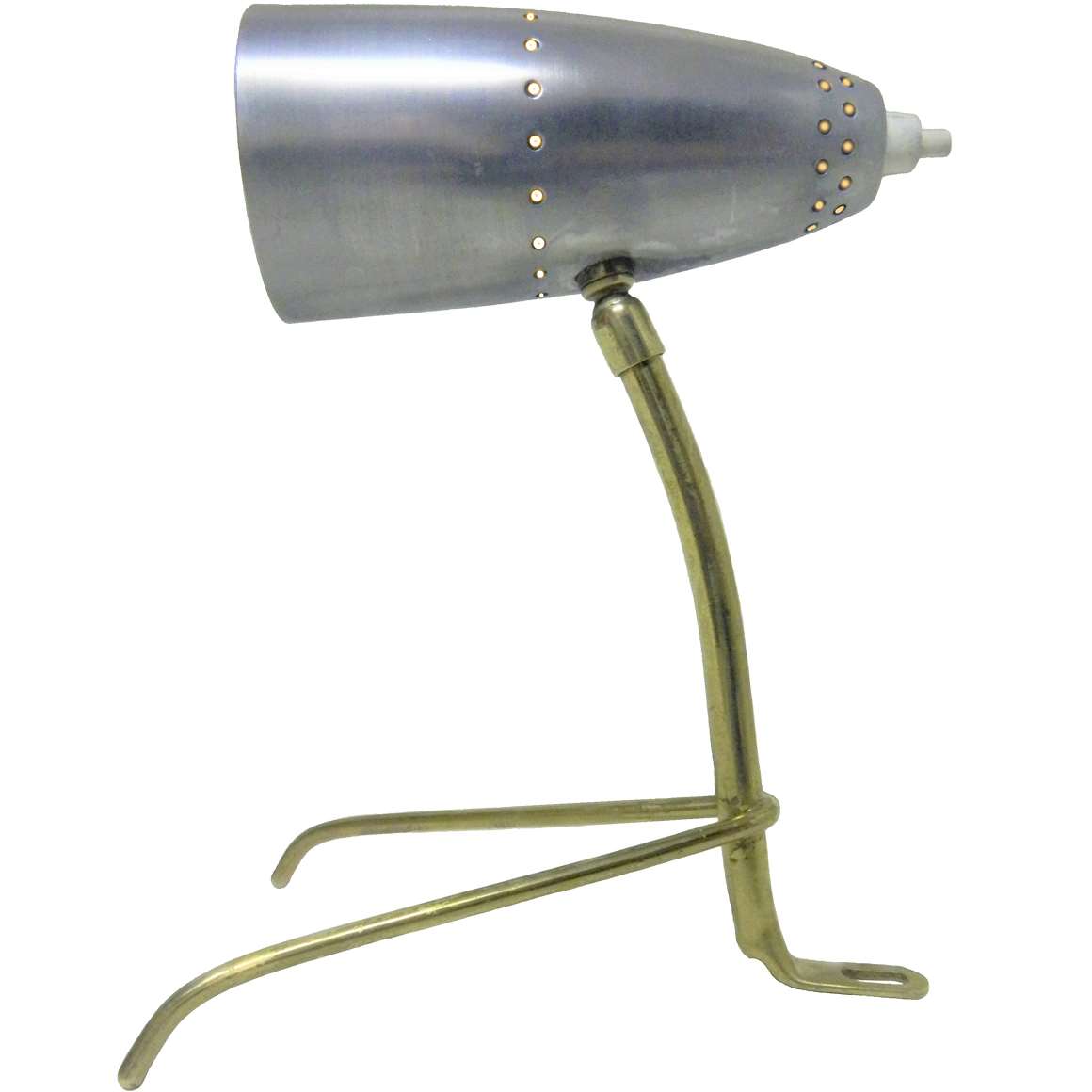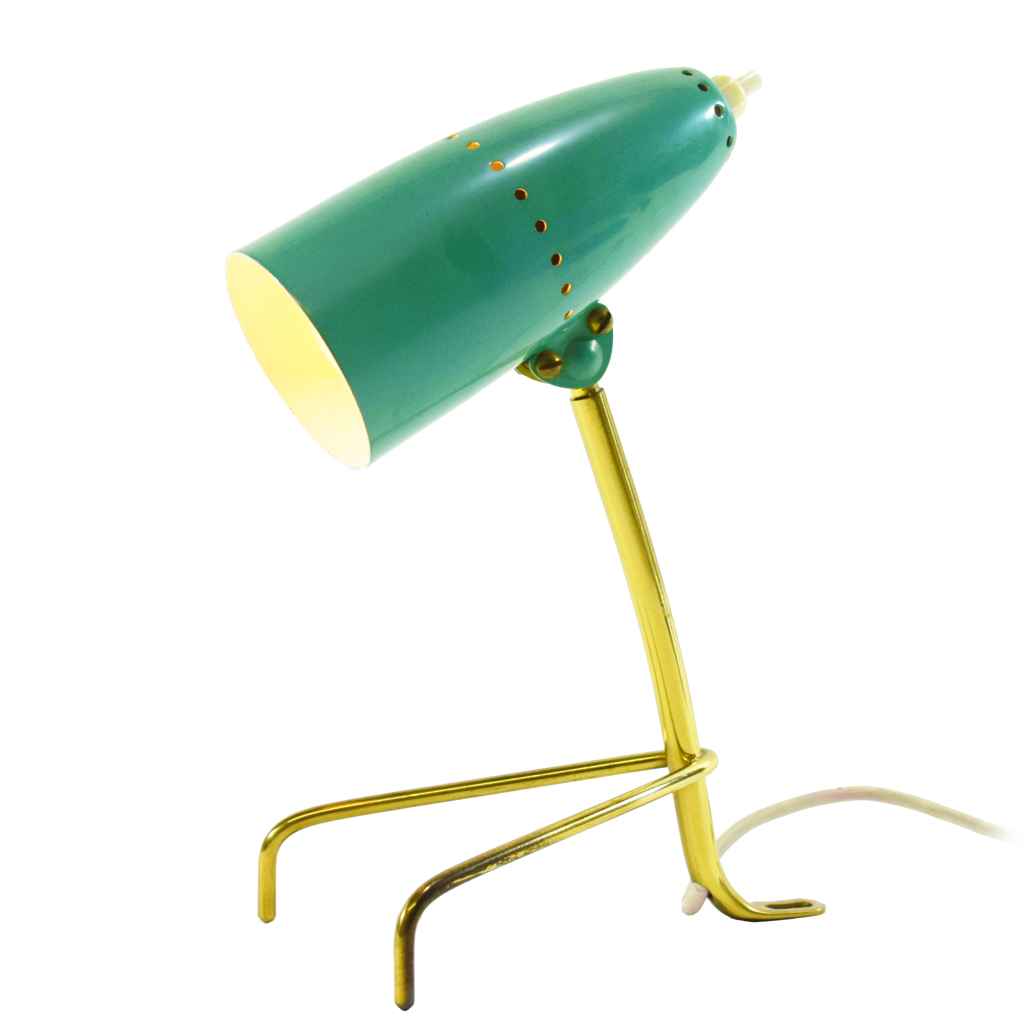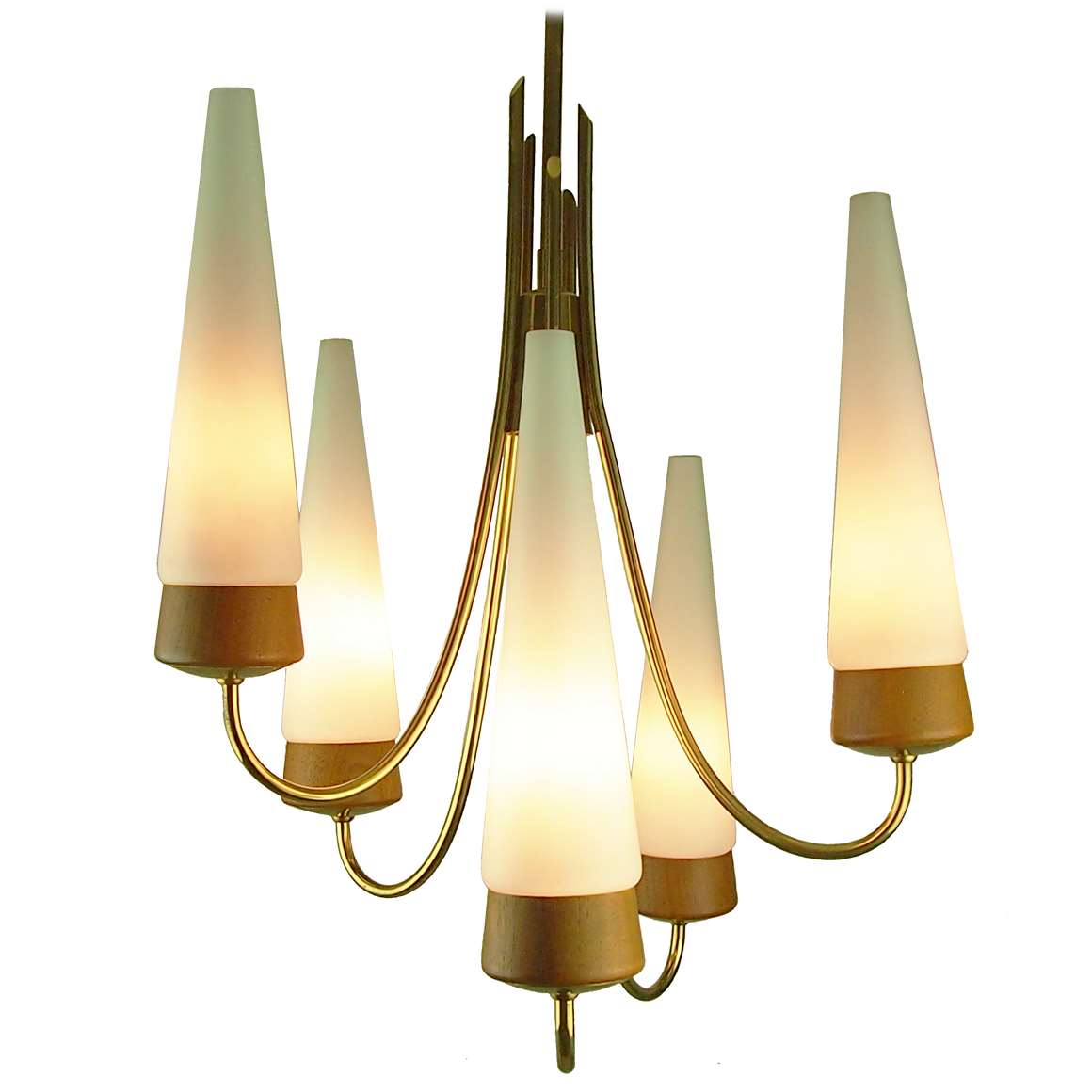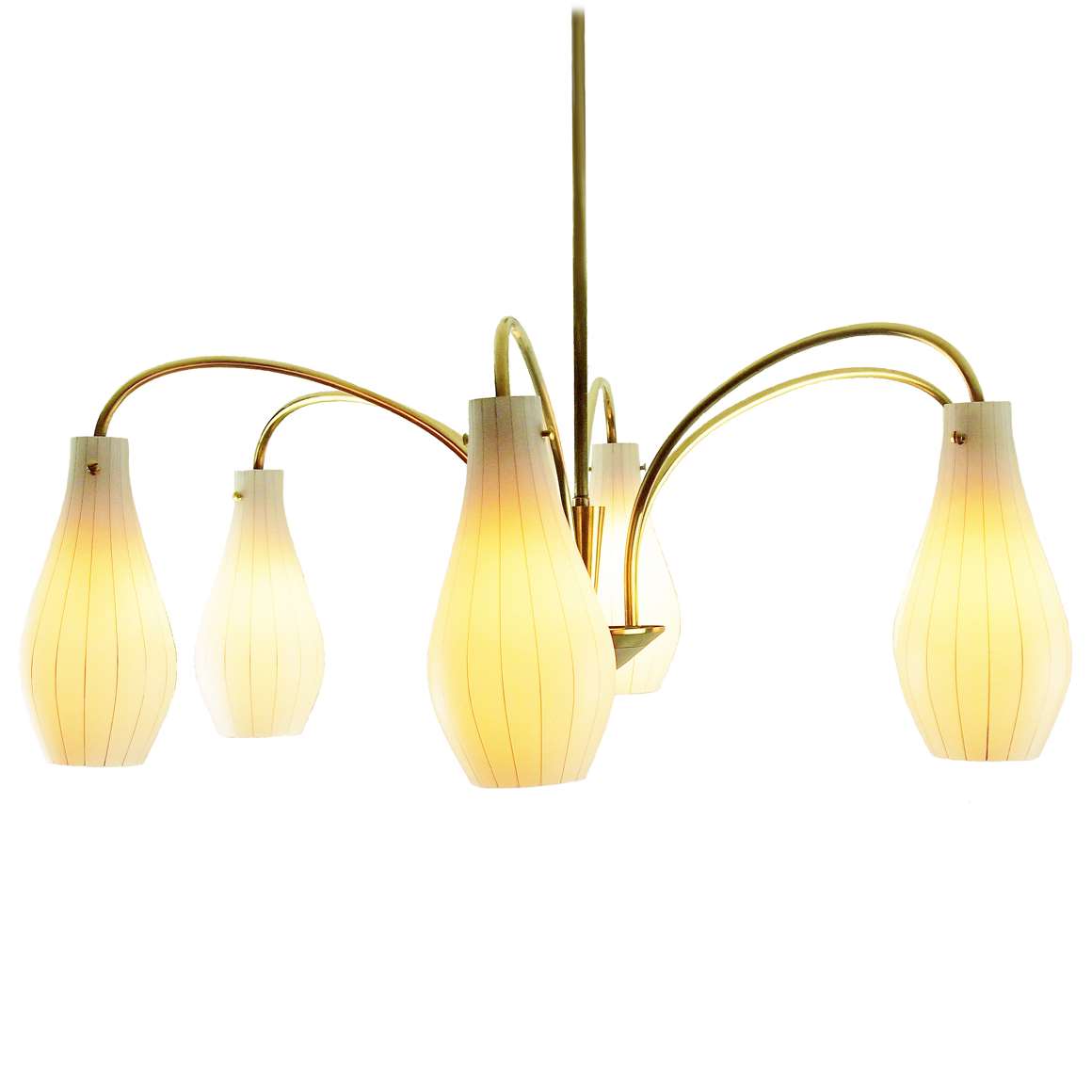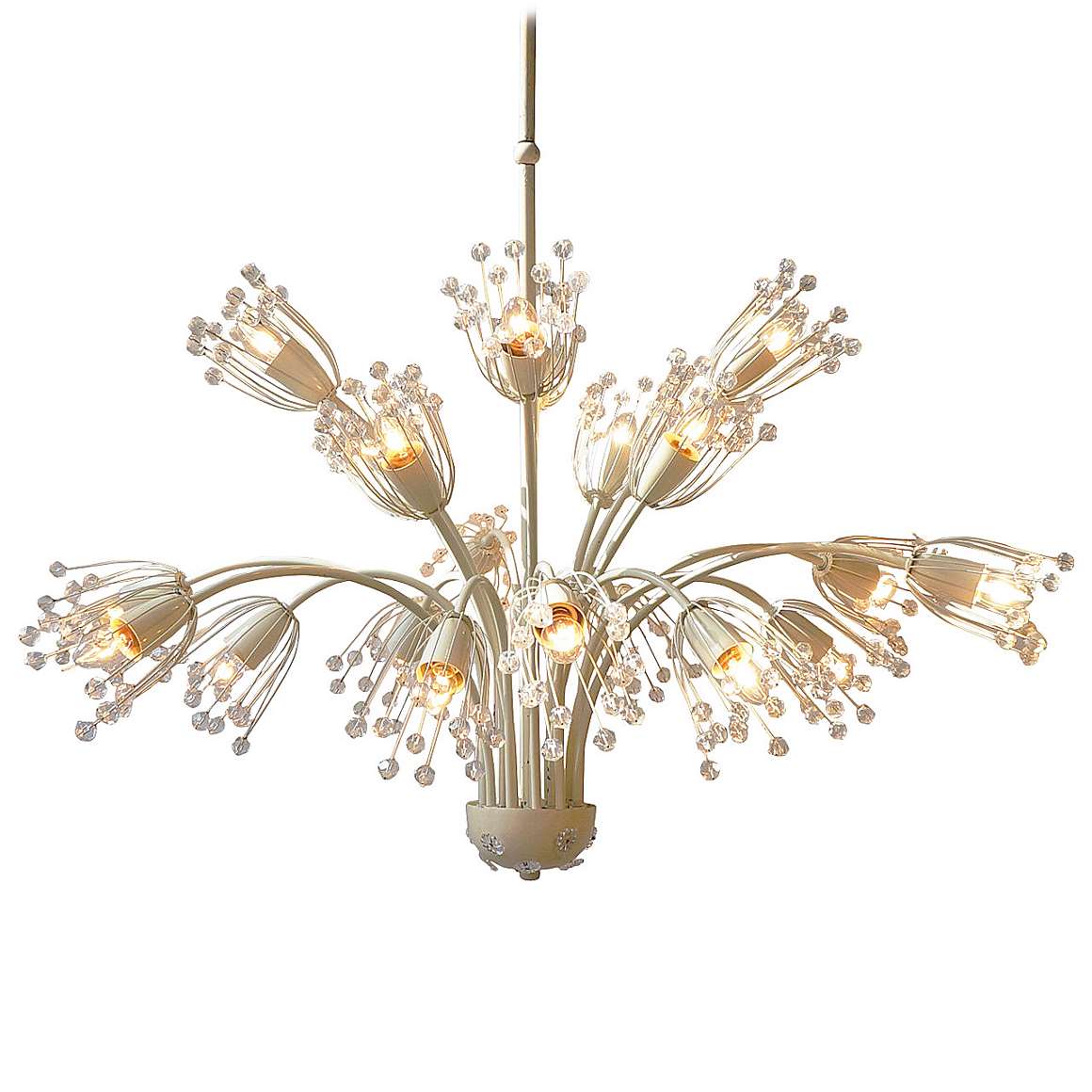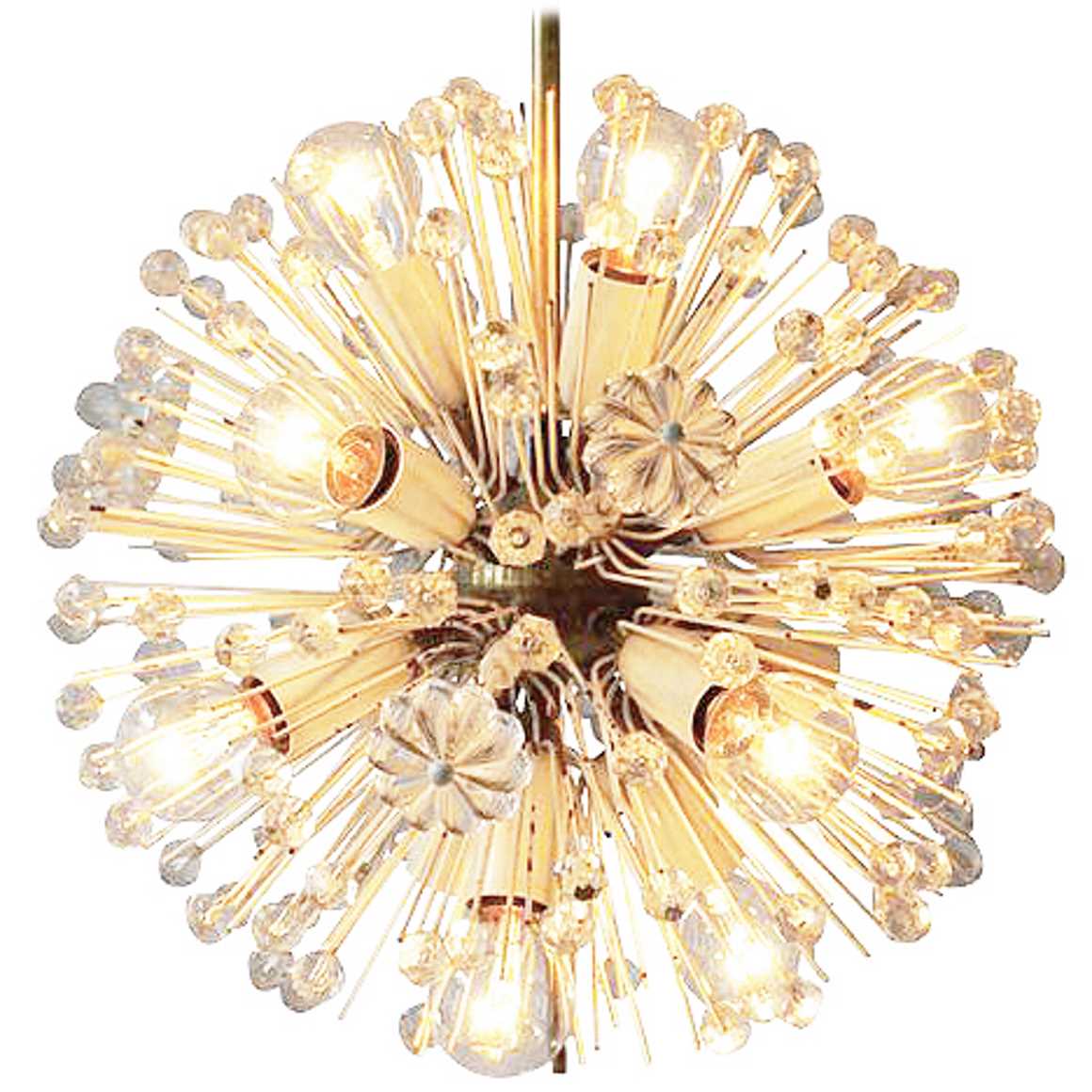1950s Diabolo Chandelier – 1960s Boulanger Catalogue Picture
The lampshades were used for many other lamps.
Links (external links open in a new window)
Les Ateliers Boulanger on Data.be
Many thanks to Max from AfterMidnight for the catalogue picture.
Many thanks to Ger for the beautiful pictures.
1950s Diabolo Chandelier
Materials: Long brass rod and canopy. 6 curved brass rods. Vanilla white painted brass disc. Some brass parts. Striped light yellow, amber glass diabolo lampshades. 6 Bakelite E14 sockets.
Rod Length: 68 cm / 26.77”
Width: ∅ 65 cm / 25.59”
Lampshades: ∅ 13 x 20 cm / 5.11 x 7.87”
Electricity: 6 bulbs E14, 6 x 40 watt maximum, 110/220 volt.
Any type of light bulb can be used, not a specific one preferred.
Period: 1950s, 1960s – Mid-Century Modern.
Designer: To be appraised.
Manufacturer: Société Anonyme Boulanger, Anderlecht, Belgium.
Other versions: This 1950s diabolo chandelier exists in several variations. Another version can be found here. The lampshades were used for many configurations, chandeliers and pendant lamps. Also wall lamps exists. Depending on their function, lampshades exist with or without perforations for the suspension mechanism. Also white opal glass and other colours were made.
The diabolo glass lampshades are hand blown, none of these glasses are the same. They were in all probability made by the glass furnace company De Rupel from Boom, or some other Belgian glass company.
S.A. Boulanger
S.A. Boulanger was founded in Anderlecht, Belgium in 1945. The company is famous for the large amount of lights it produced that were designed by Gaetano Sciolari. At some point in the 1980s the company changed their name in Les Ateliers Boulanger NV.
It has long been thought that they were two different companies, but that is because a trader from Liège, Belgium persisted that the lamps came from Herstal, near Liège.
In 1996 the company had 11 employees. The firm moved in 1998 to the Martelarenlaan 155 in 3010 Kessel-Lo, near Leuven. In the period 1995 – 2001 Jean-Philippe Spalart was the CEO. He did a feasibility study for the transfer of the company to China, Eastern Europe and Africa. Relocation of the manufacture in Zimbabwe.
Boulanger was specialised in metal processing and manufacturers high-end lamps and lighting fixtures. Les Ateliers Boulanger ended business in 2006.
Massive & Boulanger
Massive sold several Boulanger models over the years. The only difference is the typical Massive canopy/ceiling cap and some other parts.
Old text from the 1990s
“Boulanger sells mainly in the high-end lighting markets in Belgium, Germany and Luxembourg. The growing sales in the US and in South Africa are of growing importance to the company. Due to the highly competitive market, having product with a high added value is very important. The intelligent lamp is an important advantage, compared to our competitors, and will increase our market share in an important way.
The most important local competitors are Massive, a Belgian company, market leader in Europe (turnover of 100 MEUR), Deknudt at Deerlijk (turnover 2.5 MEUR) and some 10 other Belgian competitors of its own size. There is important competition from southern European and Asian competitors. The market share of Boulanger is only a few percent of the share of the Belgian companies. It is a small company with a turnover of about 300 k EURO.”
“Most Boulanger lamps are low voltage and halogen lamps (220V up to 300W or 12V up to 50W).
The products are sold to retail shops. In Belgium, about 300 retail shops sell its products. There are around 40 retail shops abroad: Luxembourg, Germany, France and South Africa.”
Diabolo
Diabolo is the name given to the shape of the lampshade. The diabolo lampshades were very popular in the 50s. You can find several examples on Vintageinfo.
The diabolo, some yo-yo, has it’s origin in China. It’s a double-coned bobbin that can be twirled, tossed, and caught on a string secured by two sticks, one held in each hand. The first diabolos were made of bamboo and they made some whistling sound.
In the eighteenth century, the diabolo became known in England and France. The term “diabolo” was made up by French engineer Gustave Phillippart, who developed the modern diabolo in the early twentieth century and he was re-released. Since then, he has been widespread.
Many types of diabolo lamps exists. Some say the first design for a lamp was by the French designer Pierre Guariche.
